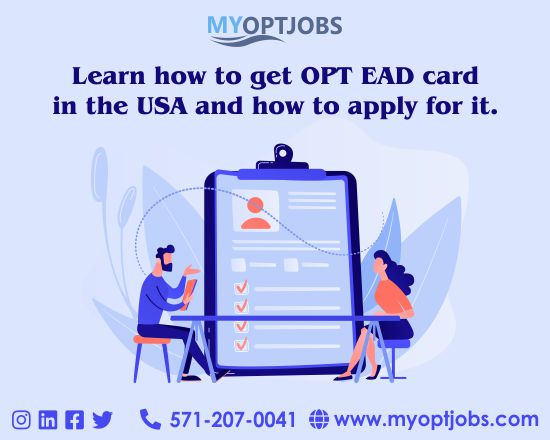- CPT stands for Curricular Practical Training. It is a great way for international students to get Practical experience in their majors before even graduating.
- The purpose of CPT is to enhance your education through practical real-world hands-on experiences while still being enrolled in school.
- CPT can give you temporary work authorization for internships, Practicums, field experience, and clinical or any type of off-campus practical training related to your majors as long as it’s in the United States. CPT authorization is required for both paid and unpaid practical training.
- F1 students need to be authorized for CPT before starting any practical training. So make sure you apply as soon as you decide to accept the internship offer. CPT is approved by your college. So you can have your work authorization in very little time from the time you apply.
- CPT can be part-time (20 hours or less per week) or full-time (more than 20 hours per week). Note that full-time CPT is only allowed during breaks such as summer, winter, and spring breaks.
Eligibility of CPT.
- Any F1visa student is eligible for CPT.
- Students who are good in academic standing are eligible for CPT.
- The student who has been enrolled full-time in the US for at least one academic year.
- The student enrolled full-time in their current program with their college for at least one semester is eligible for CPT.
- Students must have an internship offer for CPT.
- The student must have the recommendation of their academic advisor. You can have up to two semesters of CPT per degree level.
How to be eligible for CPT?
- Have the recommendation of your academic advisor.
- Have enough time left on your i-20. (I-20 cannot be extended base on doing a CPT)
- You also need to have the remaining required coursework and be enrolled in those courses.
- If you will be enrolled less than full-time, you should also complete a full-time enrollment waiver with your academic advisor for submission to your college.
- Your CPT must be completed by the final day of class for that semester.
How to Enroll in CPT: Requirements.
- To get CPT, you have to be gaining credit for the practical training. It means you have to be enrolled in a for-credit ‘internship course’ for each semester that you are doing CPT.
- The name and number of the credit hours for these courses will be different for each department. Besides the internship course, the number of credit hours you are required to take depends on whether your CPT is part-time or full-time. That’s a total of 9 credit hours for graduate students and 12 credit hours for undergraduates including your internship course.
- During the Summer semesters, you cannot enroll for part-time CPT. But if you are doing full-time CPT. You don’t have to be enrolled full-time to maintain your F1 status. You are only required to be enrolled in an internship course.
- If you decide to take the extra course during your CPT, just remember that it can be challenging to balance a full-time internship and a difficult course so only take what you are sure you can handle.
- It is also important to remember that F1 regulations require that you make normal progress in your degree program and that your I-20 cannot be extended based on CPT.
Limitations of CPT.
When you are approved for CPT. you will get a brand new I-20 that lists the company and the Period of time you are authorized to work. So, it’s a limited work authorization.
There are some limitations on the type of work you can do with CPT authorization.
Limitation -1: Duration
- You are not authorized for your internship until the CPT start date is printed on page no.2 of your I-20. And your authorization will end on the CPT end date printed on your I-20.
- Each CPT cannot be longer than one semester. It means the CPT start date must be after the last day of the previous semester and the end date must be before the start date of the upcoming semester.
- For example: If I am applying for CPT for the spring semester, it must begin offering the fall end and before the summer begins. However, if you are doing CPT in your final semester, your internship must end by the last date of the semester.
- So, If the company of your dreams wants to give you an unlimited offer of full-time employment, It is not appropriate for CPT. Also with elective CPT, you have to work at least one half of the semester. So the latest start date you can have for CPT is the mid-semester date of the current semester.
Limitation - 2: CPT is limited in regard to your employer or internship provider.
- CPT only authorized you to do Practical training for the company organization that is printed on page no. 2 of your I-20.
-
It means you cannot change employers during your CPT without prior authorization from your college.
Advantages and Disadvantages of CPT:
Advantages
- CPT allows students to work for up to 20 hours during the regular semester.
- Unlike OPT you do not need to work with USCIS to get an EAD card to do CPT.
- You can work for multiple employers during your CPT.
Disadvantages
- The major disadvantage of CPT is: if you do 12 months of full-time CPT. You will not eligible for OPT.
- You cannot begin working for paid or unpaid internships until you have the approved CPTin your hands.
- During the fall, winter, and spring semesters you can only work a total of 20 hours per week.
When should you apply for CPT?
- There is no fixed deadline for applying. However, there are some practical deadlines that will help you decide when to turn in your application. The earliest you can apply for CPT is the day you register for your internship course.
- The reason for this is that you must be registered for the internship course in order to be eligible for CPT. The latest date you can apply for elective CPT is two weeks before the mid-semester date for the semester you want to do your practical training.
- This is because you cannot begin a CPT after the mid-semester. Elective CPT will only be authorized for a minimum of Half a semester. You should apply 2-3 weeks before you plan to begin your CPT. This way your college can make sure you have your CPT I-20 in time for you to begin your internship on your start date.
- Another Practical deadline to apply for CPT is the census date. The census date is the deadline to add courses to the schedule. Since registration in an internship course is required to apply for CPT, you should make sure you are registered for the required internship course prior to that date.
- After applying for CPT if you are facing difficulties to find your desired internship in the USA as an International student. Then you can get help from My Opt Jobs. They provide different services that help you to grab your desired Internships in the USA.
How to maintain your F1 status during your CPT?
- Maintaining your F1 status during CPT is a little different than maintaining it during the regular semester.
- Be sure to stay enrolled and complete all requirements for your internship course. If you are doing part-time CPT, be sure to maintain full-time enrollment as well.
- Be careful that you only work during your authorized CPT time and for the authorized employer. You are not authorized for CPT until you have your new I-20 with the CPT authorization (Doing practical training without authorization is a violation of your F1 status.
- If you decide to travel outside of the US, Just make sure that you have the following items when you re-enter the US after your trip:
- A valid travel signature.
- Passport that is valid for at least 6 months.
- F-1 visa that is valid on the day you reenter the US.
- Proof of your enrollment at your college.
Frequently Ask Questions
1. Can I work for more than one employer during CPT?
Ans. Yes, you will need to submit an application for each employer and may need to be enrolled separately until each employer.
2. Can I do both CPT and on-campus employment?
Ans. Yes, only if the total combined number of hours per week is 20 hours or less during the fall, winter, and spring terms. No limits during breaks.
3. Do I have to enroll and pay for units during the summer session for summer CPT?
Ans. Yes if you are required to be in units for CPT then you will need to enroll and pay for the summer units 1 unit in either summer-1 or summer -2 session will cover an entire summer CPT.
4. Can I do CPT jobs for more than one quarter at a time?
Ans. Yes, but you will need to apply and be approved for CPT for each academic term.
5. Can I be approved for CPT while on filing fee status?
Ans. No, CPT is part of your academic coursework - Filing fee status = Finished with coursework.
6. Do you need a valid F1 visa for CPT jobs?
Ans. Yes, the CPT participant must be a valid F1 visa status holder. CPT participants must be enrolled as full-time students for one year in an academic or degree program on valid F1 visa status.
7. Does CPT jobs need sponsorship?
Ans. CPT is not a separate visa category and does not require “sponsorship” from an employer.





